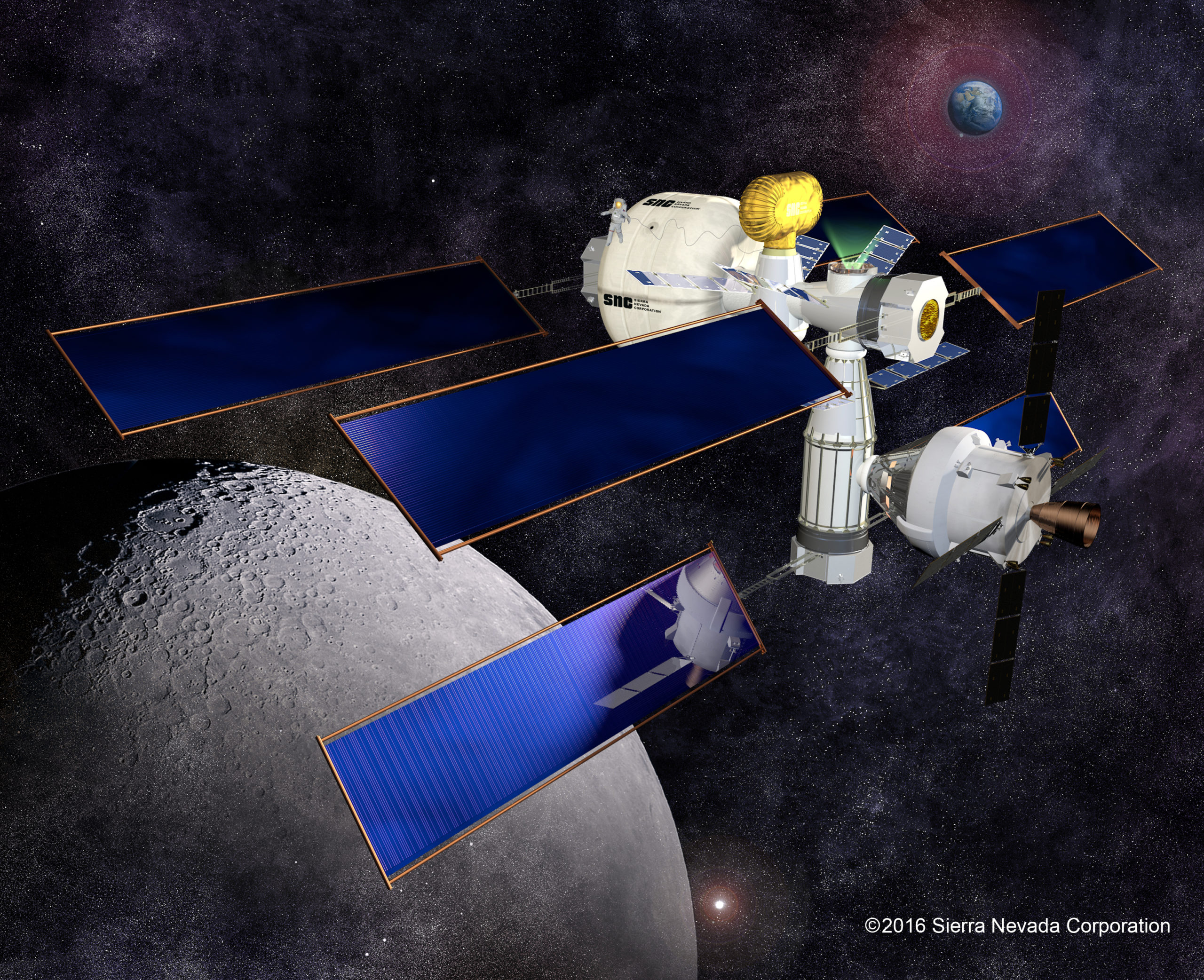
As it gears up for the initial test flight of its Dream Chaser spaceplane to the International Space Station (ISS) sometime next year, Sierra Nevada Corp. (SNC) has outlined plans to develop an expandable space station in Low Earth Orbit (LEO) for a variety of commercial enterprises, ranging from in-space manufacturing to pharmaceutical and medical research and from agricultural production to movies and even tourism. It is expected that the station—comprising several of SNC’s in-house-built Large Inflatable Fabric Environment (LIFE) Habitat pressurized modules, totaling three stories in size—will receive its private astronaut crews via a piloted variant of Dream Chaser.
“There is no scalable space travel industry without a spaceplane,” said SNC Chairwoman and owner Eren Ozmen. “Dream Chaser and its runway landing offer the scalable, preferred solution for humans and science in support of a vibrant LEO economy.”
As reported last summer by AmericaSpace, SNC already harbors ambitions for its LIFE Habitat hardware for the lunar surface, including as part of NASA’s Human Landing System (HLS) crew cabin contract awards and as an integral element of a future crewed Mars transit vehicle.
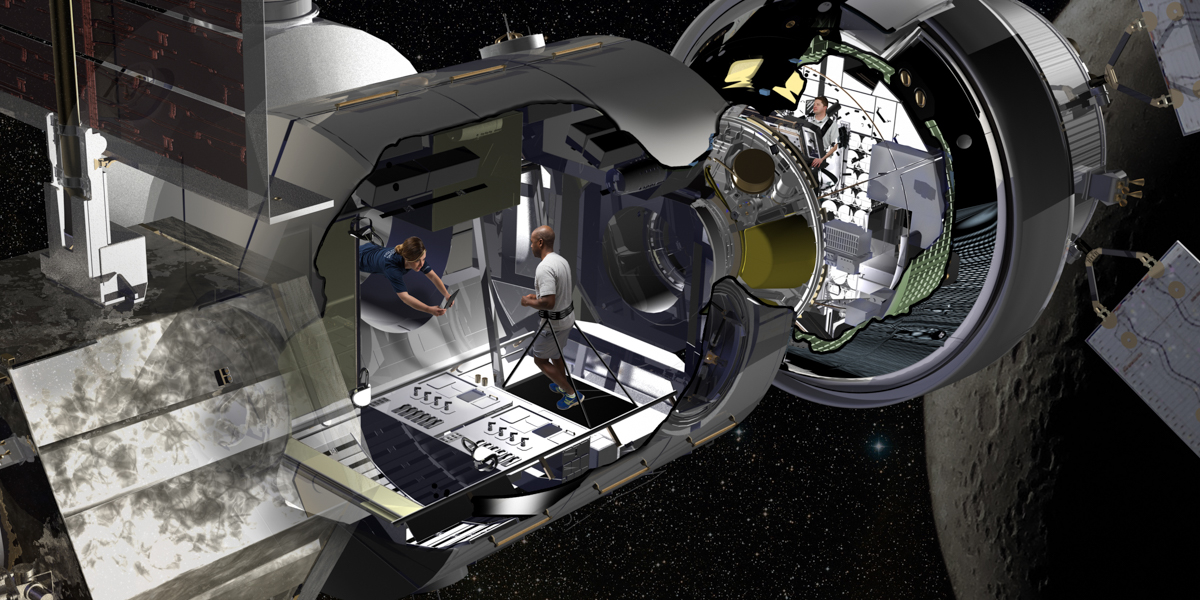
Under the language of Phase 3 of NASA’s Next Space Technologies for Exploration Partnerships (NextSTEP-2) Appendix A, SNC worked through the second half of 2020 on reducing risks and enhancing the technical maturity of its habitat concept to reach System Definition Review (SDR) level. Deep Space Habitat (DSH) facilities are a critical component in enabling humans to survive for long durations in deep space, as NASA seeks to venture beyond low-Earth orbit for the first time since the end of the Apollo era.
Aside from its potential NASA usage, the LIFE Habitat is fully expected to play a central role in SNC’s own ambitions for LEO commercialization. Launched within the payload fairing of a conventional rocket, the concept will expand in space into a three-story structure with a height and diameter of 27 feet (9 meters).
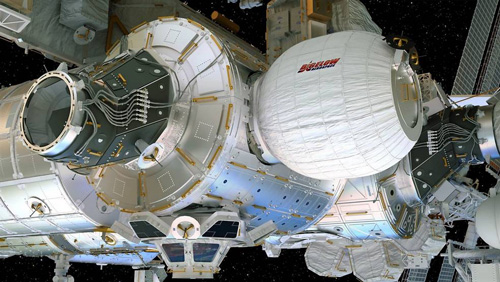
“Soft-goods construction allows packaging inside a standard 17-foot (5-meter) fairing,” SNC explained last August. And with a “significant” internal pressurized space of 10,600 cubic feet (300 cubic meters)—roughly a third of the pressurized extent of the International Space Station (ISS)—it will comfortably house a crew of four astronauts, together with their scientific research equipment, exercise gear, a dedicated medical center and SNC’s Astro Garden to grow fresh produce for long-duration missions far from Earth.
Plants grown on the Astro Garden “wall” will also capture excess carbon dioxide from the LIFE Habitat’s cabin atmosphere. Meanwhile, its waste management system will compact trash into “bricks” which can be used for additional radiation protection.
It is also expected that the habitat will incorporate an emergency radiation shelter for the crew and a flexible airlock for in-space assembly, Extravehicular Activity (EVA) operations and the arrival and docking of visiting vehicles.
And the principal anticipated visiting vehicle will be Dream Chaser, an uncrewed variant of which will conduct at least six Commercial Resupply Services (CRS2) missions to the ISS, beginning in 2022.
Earlier this spring, the spaceplane—which looks not dissimilar to a scaled-down version of NASA’s now-retired Space Shuttle—received Federal Aviation Administration (FAA) approval to execute its end-of-mission landings at the repurposed Shuttle Landing Facility (SLF) at the Kennedy Space Center (KSC) in Florida. It is expected that airliner-like landings will prove significantly more benign conditions, not only for returning astronauts, but also for highly delicate payloads.
Dream Chaser’s journey from the drawing-board to actual hardware has been a long, tough and convoluted one. In development for almost two decades—having been publicly announced way back in September 2004—it was originally hoped that the spaceplane would play a role in the Commercial Crew Program.
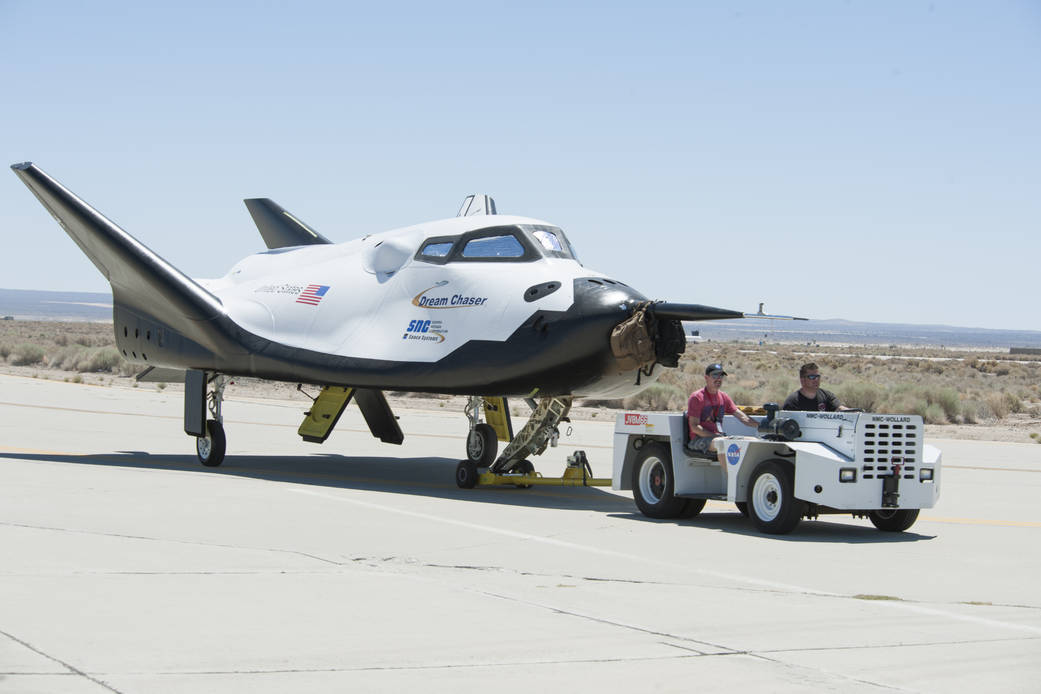
In August 2012, SNC received $212.5 million in Commercial Crew integrated Capability (CCiCap) funds, with hopes that it might someday launch atop a United Launch Alliance (ULA) Atlas V rocket and deliver crews of up to seven astronauts to the ISS. But in September 2014, it lost out to Boeing’s CST-100 Starliner and SpaceX’s Crew Dragon, a decision against which SNC mounted an ultimately unsuccessful challenge.
However, in March 2015 the organization reinvented its ship as the Dream Chaser Cargo System to restock the ISS in an uncrewed capacity and in January 2016 was selected as one of three cargo providers under the second-round Commercial Resupply Services (CRS2) contract. Under the terms of its contractual obligation to NASA, SNC would fly at least six Dream Chaser missions to the space station in the 2019-2024 timeframe.
Although physically identical to its earlier crew-carrying variant, as part of the CRS2 requirement the spaceplane would feature an innovative and versatile folding-wing structure, which enables it to fit within the Payload Fairing (PLF) of any sufficiently capable launch vehicles, including ULAs Atlas V and Europe’s Ariane 5. It was also revealed that Dream Chaser would carry a 16-foot-long (4.8-meter) cargo container, known as “Shooting Star”, which will be disposed of in the upper atmosphere at the end of each mission.
In July 2017, SNC chose ULA to launch its first two Dream Chaser missions in 2020 and 2021, initially atop the Atlas V, although in August 2019 it was reported that the spaceplane would utilize the in-development Vulcan-Centaur instead. The latter is targeted to make its maiden voyage from Space Launch Complex (SLC)-41 at Cape Canaveral Space Force Station, Fla., later this year, with an expectation that the inaugural Dream Chaser will ride the heavylift booster’s second voyage at some stage in 2022.
As for the actual Dream Chaser itself, the primary spacecraft structure—measuring 30 feet (9.1 meters) long, with a wingspan of 15 feet (4.6 meters) and weighing some 2,200 pounds (1,000 kg)—was delivered by subcontractor Lockheed Martin from its Fort Worth, Texas, plant to SNC’s integration facility in Louisville, Colo., in October 2019.
In the months thereafter, it received several other major components. Its wings and Wing Deployment System (WDS) arrived last April, followed by its Shooting Star cargo container last May, ahead of a key integration phase which included installation of the SNC-built Passive Common Berthing Mechanism (PCBM) to permit Dream Chaser to berth at the space station’s Unity or Harmony nodes.
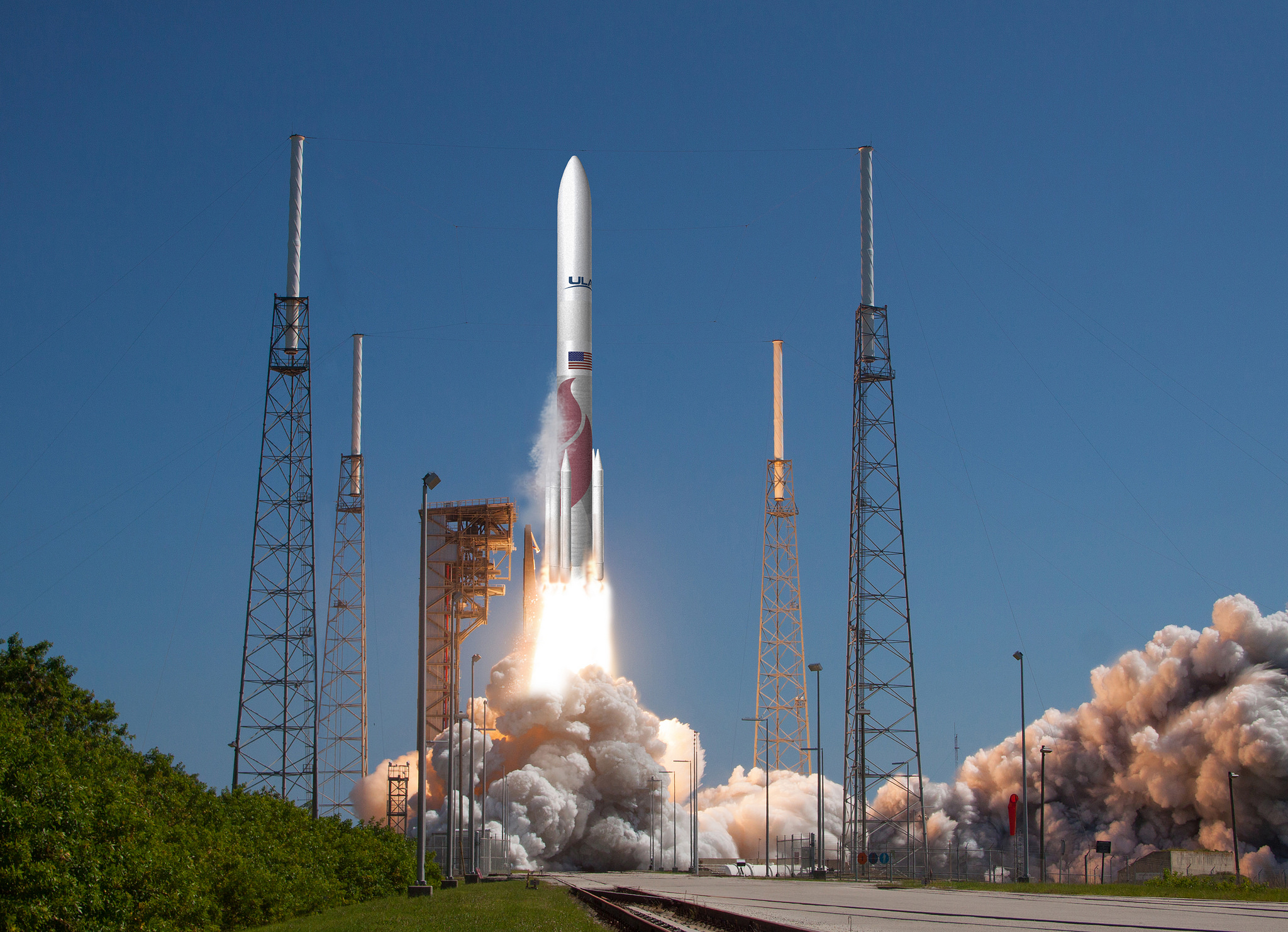
Last June, the first of around 2,000 heat-resistant tiles—a critical element of the spaceplane’s Thermal Protection System (TPS)—were delivered and technicians began bonding them onto Dream Chaser’s airframe. More recently, last November integration and testing of the wings on the SNC production floor in Louisville, Colo., got underway, with an expectation that they will be installed onto Tenacity’s airframe this coming summer.
Meanwhile, the LIFE Habitat is presently undergoing a NASA soft-goods certification in 2021 as a full-size ground prototype developed under the Next Space Technologies for Exploration Partnerships (NextSTEP)-2 contract is in the process of being transferred from the Johnson Space Center (JSC) in Houston, Texas, to the KSC for further testing on its short-term and long-term habitation capabilities.
As a public-private partnership, NextSTEP seeks to enable commercial entities to develop technologies to carry humans to lunar distance and beyond for the first time in five decades. One of the central tenets of the NextSTEP philosophy is that award recipients must contribute at least 30 percent of the cost of the overall proposed effort.
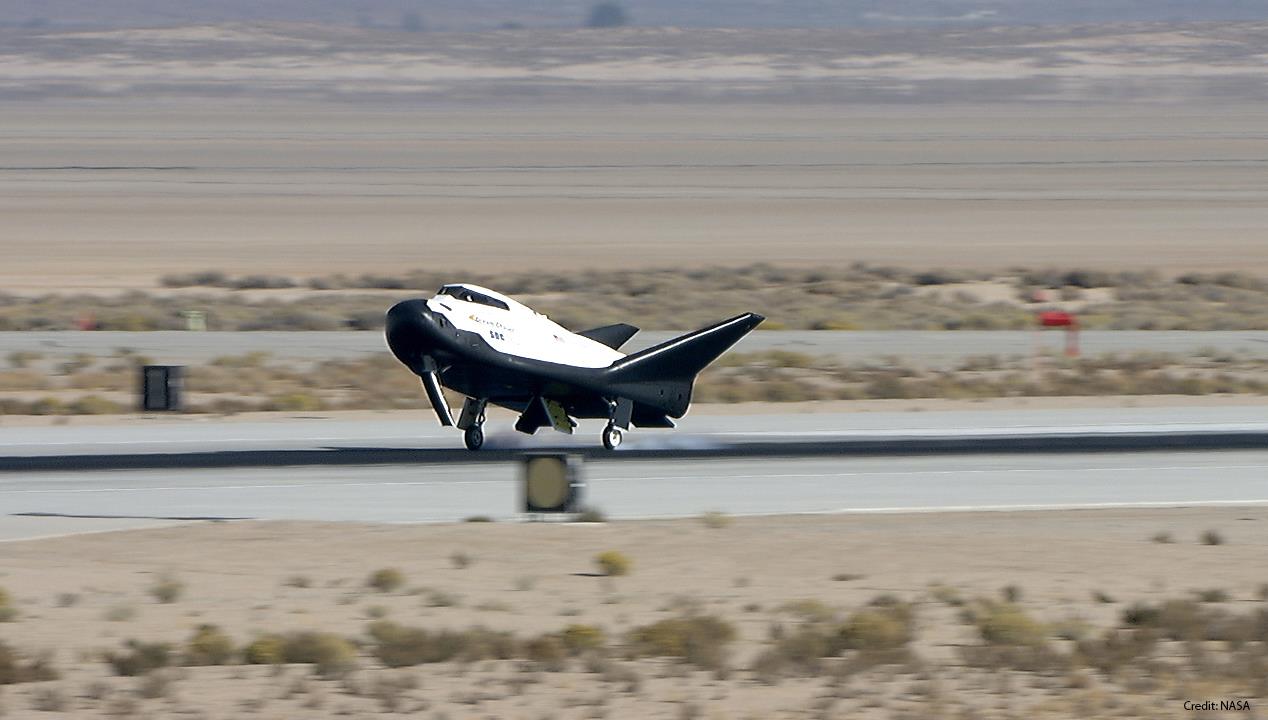
Back in April 2016, NASA solicited proposals for what was then known as the Deep Space Habitat (DSH) via Appendix A of the NextSTEP-2 Broad Agency Announcement (BAA). Six U.S. firms—including SNC—were selected the following August for initial study contracts, lasting up to two years, to devise their own ground-based prototypes or concepts.
SNC’s concept was expected to leverage “three to four commercial launches to construct a modular, long-duration habitat”, with the cargo module of Dream Chaser expected to play a key role in establishing the LIFE Habitat, its Environmental Control and Life Support System (ECLSS) and its propulsion system.
“After launch from the Dream Chaser spacecraft, the SNC NextSTEP-2 module will be combined with a large inflatable fabric environment module, ECLSS and propulsion system,” NASA noted in July 2017. “The design and prototype will confirm the proof-of-concept and ensure critical subsystems seamlessly integrate together”.

“The Dream Chaser spacecraft will return home after Low-Earth Orbit missions,” SNC has previously described, “but the Cargo Module will remain on-orbit to be integrated with other components, including an advanced electric propulsion module for transferring the system to lunar orbit.” In January 2018, SNC received a follow-on contract from NASA to design and fabricate its DSH prototype.
Partnering with Aerojet Rocketdyne and ILC Dover, the full-scale prototype of the main habitable volume was due to be finished within 19 months. It was delivered to NASA’s Johnson Space Center (JSC) in Houston, Texas, in May 2019, where it was subjected to what SNC called “a very positive” crew evaluation, “with high scores”. SNC’s contract was extended by a further year “for additional prototyping and test”.
“NASA has asked private industry to come to the table with alternatives to the International Space Station,” said Janet Kavandi, a three-time shuttle astronaut and former director of NASA’s Glenn Research Center (GRC) in Cleveland, Ohio, who has since January 2019 headed SNC’s Space Systems business area. “SNC intends to lead in LEO commercialization, building on NASA’s efforts to date and welcoming additional public and private partners worldwide.”




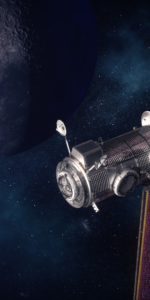
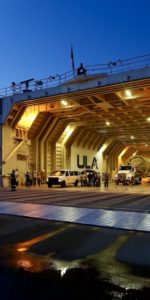
I hate april fools